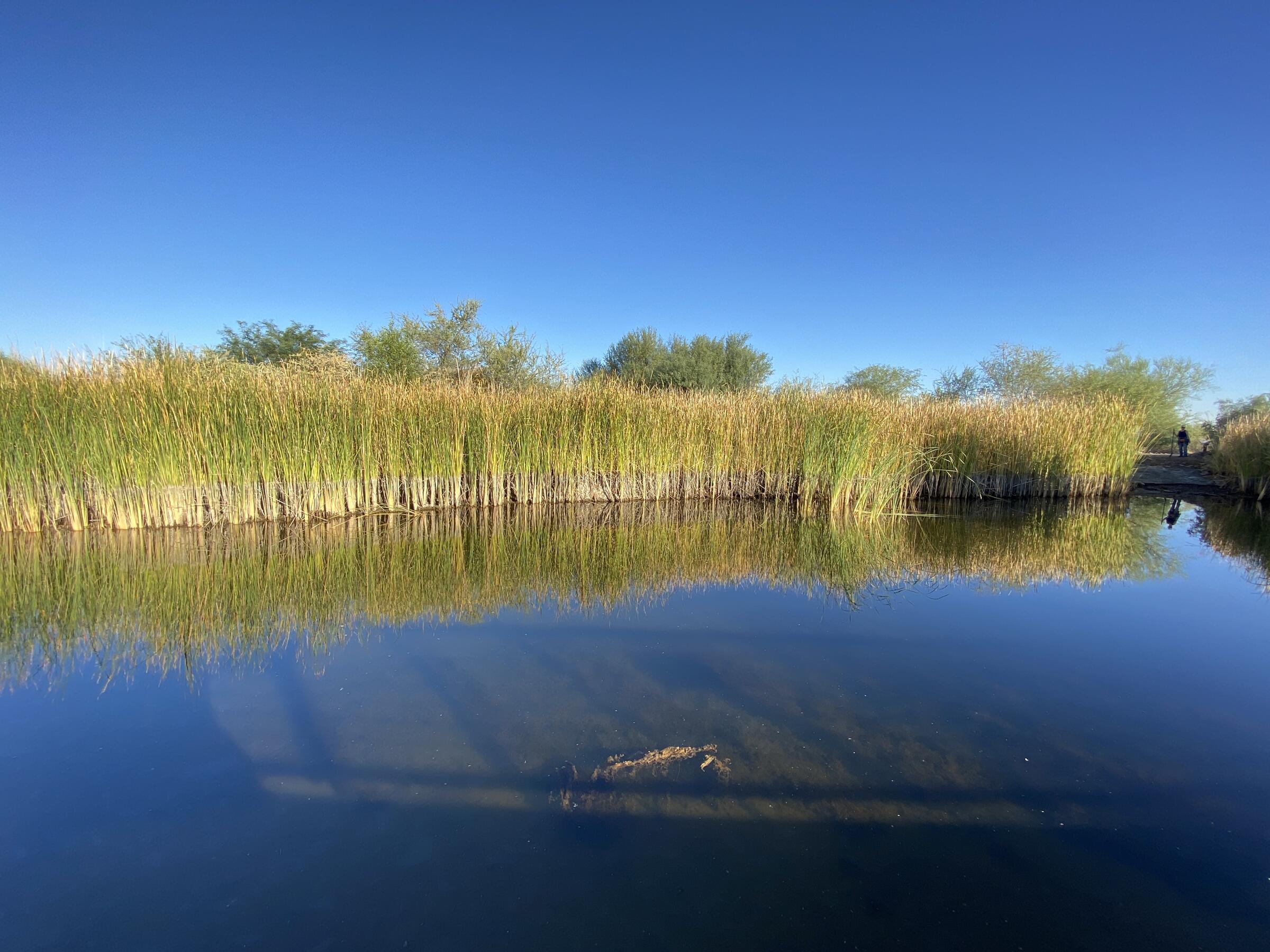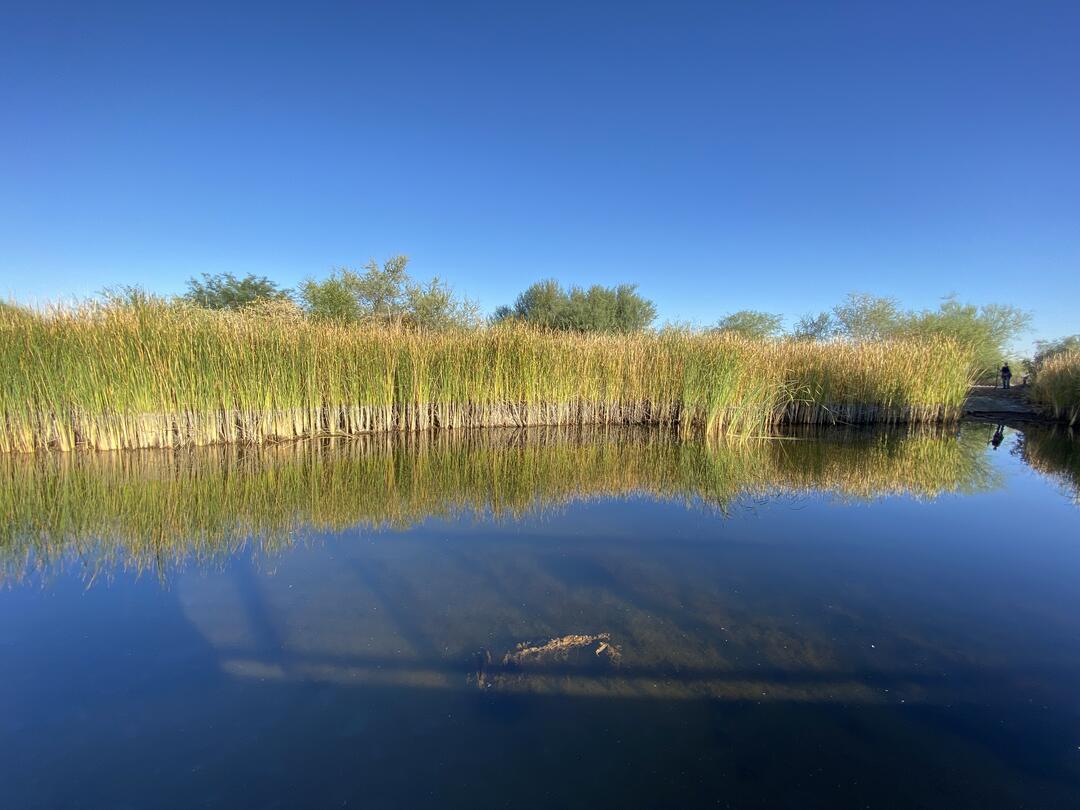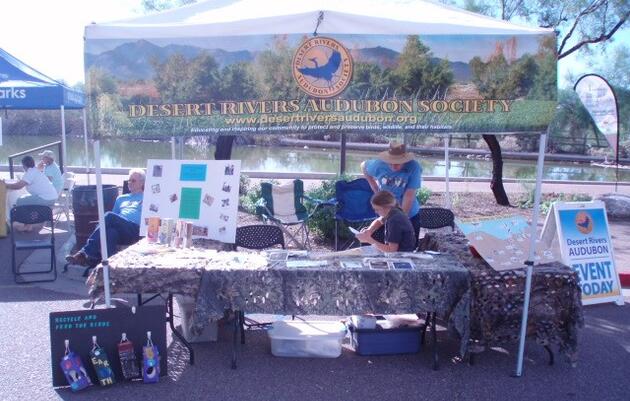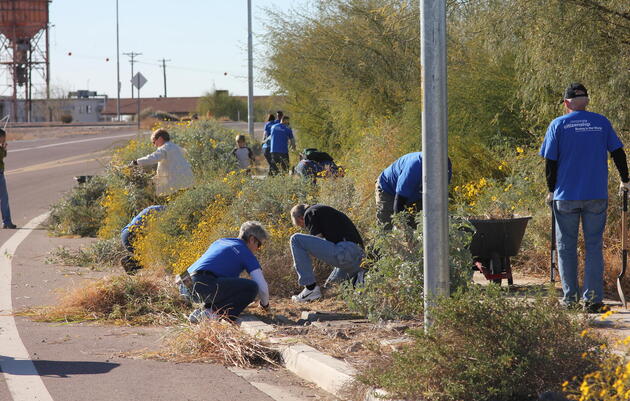Thanks to an Arizona Game and Fish Department Heritage Fund Grant, nearly 120 hours of volunteer labor, and donated materials from local construction and landscaping companies, the Nina Mason Pulliam Rio Salado Audubon Center is now home to 2,000 square feet of freshly renovated habitat for two of Arizona’s most imperiled species.
If you’ve ever visited the Nina Mason Pulliam Rio Salado Audubon Center in Phoenix, Arizona, you’ve likely spent some time poking around the edges of our 13,000 square foot wetland pond. You were probably rewarded with the splash of a Pied-billed Grebe, a glimpse of a Green Heron, or the call of a Black Phoebe, but did you take a moment to look beneath the surface of the water? If you did, you’d have realized that, as it often is, the abundance of birds was a sign of something much bigger going on. Just over 100 years ago, when the Salt River flowed freely through what is now Phoenix, it would have been one of many ephemeral (seasonal) ponds and wetlands dotting the river’s floodplain. Over the last century, these habitats have become increasingly rare. To put some numbers to the problem: riparian (riverside) and wetland habitat make up less than one percent of Arizona’s total area. Of that, over two thirds has been altered by human activities like damming, diversions, pumping, agriculture, and urbanization. Unsurprisingly, these changes have driven declines in Arizona’s wildlife, particularly among our native fish. Of the 34 fish species native to the state, 21 are threatened or endangered and one, the Santa Cruz or “Monkey Springs” Pupfish, is already extinct.
With natural habitat hard to come by and species on the brink, managed sites like the wetland pond are a critical part of efforts to help these fish survive into the future. Audubon Southwest manages the habitat cooperatively with the Arizona Game and Fish Department to support populations of two species, Desert Pupfish and Gila Topminnow, that can be be used as a source for efforts to establish natural populations around the state. Coupled with Arizona Game and Fish Department efforts to enhance and reclaim natural habitat, sites like these are essential to species recovery efforts. These small fish (pupfish grow to a little less than three inches in length and topminnow max out at less than two) can be easily seen swimming near the edges of the pond on warm mornings from the center’s north patio. Look deeper into the pond and you might see a school of the pond’s much larger residents, Razorback Suckers.
Just hang onto some fish… sounds easy, right? After over a decade of maintaining the site, we’ve seen it all – invasive species that forced us to drain the pond entirely, plumbing issues that shot our water bills through the roof, water quality issues that never seem to end, bullfrogs, bullfrogs, and more bullfrogs. Thanks to our loyal volunteers and countless hours of donated time, we’ve tackled every challenge the pond has brought our way, but there has always been one that keeps coming back: cattails.
Both Gila Topminnow and Desert Pupfish depend on shallow, open shorelines. In this habitat, the topminnow stick to the top few inches of water, finding plenty of mosquito larvae on which to feed, while pupfish search the bottom for a perfect, sandy, sun-exposed nesting territory. As cattails encroach on this habitat, the topminnow lose their open foraging habitat, the pupfish lose the ability to defend their nests, and populations of both decline. Cattails can of course be removed but the work is hard and they come back time and time again.
But we’re not giving up. Last weekend, Audubon volunteers, Arizona Game and Fish Department staff, and Scouts from Troop 39, Crew 2619 and the Grand Canyon Council helped clear vegetation from roughly 2,000 square feet of shoreline habitat and, adding some permanency to their work, laid concrete over roughly half of the cleared area. Not only will these newly cleared areas benefit the pond’s populations of Desert Pupfish and Gila Topminnow, but they’ll also make access easier for Arizona Game and Fish Department biologists, add habitat diversity that will undoubtedly make this great birding patch even more productive, and provide better visibility for center visitors hoping to observe the pond’s wildlife.
We’re grateful to have this opportunity to support statewide species conservation efforts out of the Nina Mason Pulliam Rio Salado Audubon Center, and even more grateful to the volunteers that have helped us maintain and improve the site over the years. Next time you visit, be sure check out the new ramps and look down to spot some topminnow and pupfish, but don’t be too mad when you see a Snowy Egret gobble one down. We are Audubon, after all!












